If you've ever wondered how to keep your digital services running smoothly—like that meticulously orchestrated behind-the-scenes ballet that happens every time a user clicks on your app or website—then you're thinking about synthetic monitoring.
It's one of those crucial cogs in the digital machinery that often goes unnoticed, yet without it, the entire ensemble might falter.
What Exactly Is Synthetic Monitoring?
Let's break it down. Synthetic monitoring involves deploying bots or scripts to simulate user interactions with your software, applications, or websites. These bots tirelessly perform predetermined tasks (like logging in, clicking around, or filling out forms) to test load times, functionality, and the overall user experience.
This happens across different environments and at all hours, providing a continuous health check for your systems.
The purpose here is twofold: ensure functionality and optimize performance. Think of it as both a diagnostic tool and a forward-looking system that helps refine user experience continuously.
Imagine this: It’s the eve of a major product launch, and the engineering team at a bustling tech startup is burning the midnight oil. After months of development, the new application is poised to revolutionize how their customers engage with their services.
There’s just one hurdle left—the final pre-launch review to ensure everything runs like clockwork.
Suddenly, during a routine test, the server response time spikes, and a critical feature fails. The team scrambles, tracing logs and tweaking configurations, but the clock is ticking. The stress is palpable—everyone feels the weight of the potential fallout from a botched launch.
Synthetic monitoring tools pose as the unsung heroes for teams like this. By simulating user interactions and automating tests 24/7, these tools offer a proactive approach to ensuring application robustness and a stellar user experience.
Here’s how they turn potential disasters into triumphs:
The primary draw of synthetic monitoring tools is their ability to continually test and monitor applications by simulating user traffic.
It ensures that no matter where your users are or what device they use, they get the experience you've promised.
One of the top features these tools boast is the early detection of potential issues before they affect real users.
Synthetic monitoring acts as a canary in the coal mine, alerting engineers about response time delays, functionality breakdowns, or downtime that could derail user experience.
For engineers, this means they can pinpoint and fix issues before they escalate, often deploying solutions with no disruption to the user experience.
Performance benchmarking is another standout feature. By continuously tracking how well the application performs against predetermined benchmarks, synthetic monitoring tools provide a clear picture of whether the current infrastructure can handle the projected load.
This helps engineering teams make informed decisions about necessary upgrades or optimizations, ensuring the application scales seamlessly as user demand grows.
Engineers receive reports that highlight not just what went wrong, but how, when, and under what conditions.
This detailed analysis aids in not just troubleshooting but also in understanding user behavior patterns, helping tailor future development to align closely with user expectations.
In essence, synthetic monitoring tools empower engineering teams by offering them a bird’s-eye view of their application’s performance, equipped with the foresight to anticipate issues, the data to understand them, and the tools to fix them proactively.
Let's look into some popular solutions that are helping teams keep their digital experiences polished and performant.
In the next section we’ll cover the following tools known for Synthetic Monitoring:

Datadog, founded in 2010, offers a robust, cloud-based platform for comprehensive infrastructure monitoring. Known for real-time tracking and intuitive dashboards, it helps teams quickly identify and resolve performance issues.

Datadog, founded in 2010, is a robust, cloud-based platform that offers extensive monitoring capabilities across your infrastructure. Known for its real-time data tracking and intuitive dashboards, Datadog helps teams quickly identify and rectify performance bottlenecks.
Offers multiple plans, including a Free tier with basic features for upto 5 hosts Pro plan starting at $15 per host per month, Enterprise plan starting at $23 per host per month.

New Relic, founded in 2008, offers powerful application performance monitoring with deep diagnostic capabilities. It helps teams proactively manage application health and optimize user experience through actionable insights.

New Relic stands out for its ability to deliver actionable insights through deep diagnostic capabilities, making it especially powerful for application performance monitoring. Founded in 2008, this tool is renowned for helping teams proactively manage application health by detecting and resolving issues before they impact users, ensuring optimal performance and enhancing user experience.
No
Free tier available; Essentials plan starts at $0.30 per GB ingested

Sematext, founded in 2013, provides a user-friendly synthetic monitoring solution, ideal for smaller teams. It offers essential monitoring features with a focus on ease of use and quick deployment.
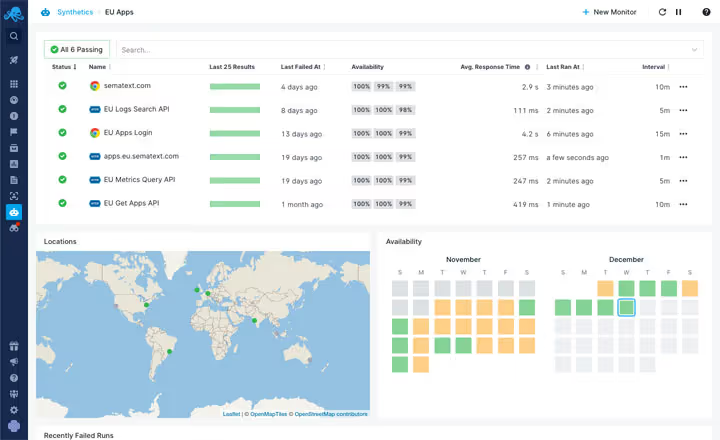
Sematext, founded in 2013, offers a straightforward and user-friendly synthetic monitoring solution, perfect for smaller teams embarking on performance monitoring. This tool streamlines the setup process, enabling teams to quickly deploy and utilize monitoring capabilities without a steep learning curve. Ideal for those seeking to enhance their monitoring strategies efficiently, Sematext provides essential features in an accessible format.
Sematext cloud pricing - Monitoring starts at $3.6 per host per month Experience starts at $9 per month Synthetics starts at $2 per monitor per month

Pingdom, a Swedish-based tool, is renowned for website monitoring, offering detailed insights into uptime and performance. It emphasizes real-time monitoring, ensuring optimal user experiences and operational efficiency.

Pingdom, based in Sweden, excels as a tool for website monitoring, prominently recognized for its reliable uptime and performance testing features. It provides detailed insights into website availability and user experience, enabling businesses to optimize operational efficiency and promptly address issues. With Pingdom, teams can monitor their site's performance in real-time, ensuring top-notch user experiences and minimizing downtime.
Community Feedback: Well-regarded for its alerting and uptime monitoring features. Some feedback points to a need for more granular analytics.
Starts at $10/month for the basic plan

Dynatrace offers cutting-edge APM solutions tailored for complex, enterprise-scale applications. It delivers unmatched monitoring depth across all system layers, allowing teams to pinpoint and resolve bottlenecks with surgical precision. Dynatrace seamlessly integrates with diverse platforms, technologies, and cloud environments, making it ideal for organizations seeking comprehensive monitoring and optimization across their tech stack.
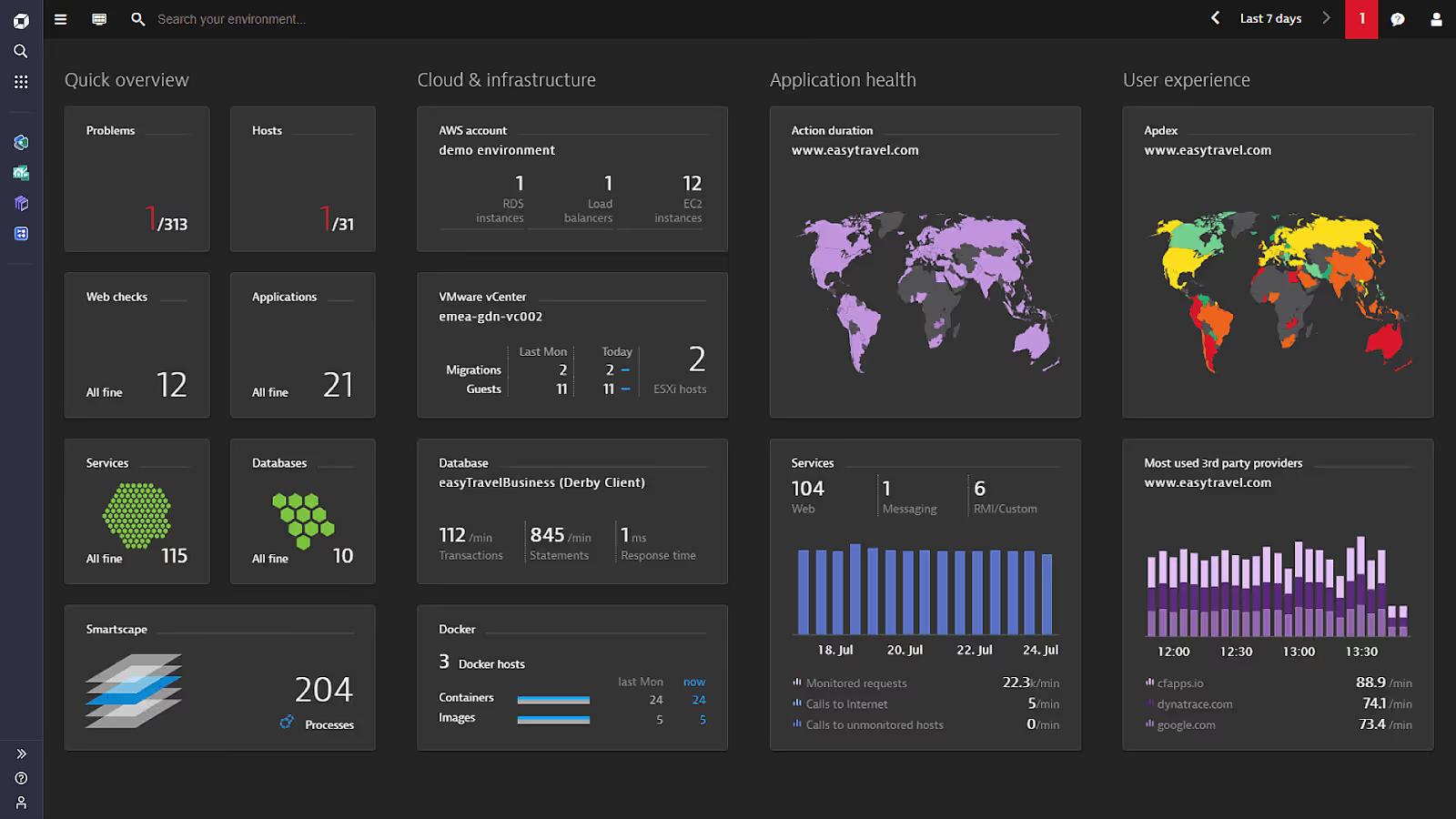
Community Feedback: Generally positive, with users consistently praising its powerful AI-driven analysis, detailed root-cause identification, and comprehensive visibility across cloud environments. Some considerations include potentially higher costs and a steeper learning curve for setup and configuration.
Dynatrace offers a transparent pricing model with hourly rates for various services, such as Full-Stack Monitoring at $0.08 per hour for an 8 GiB host, Infrastructure Monitoring at $0.04 per hour for any size host, and Kubernetes Platform Monitoring at $0.002 per hour for any size pod.

SpeedCurve, headquartered in New Zealand, specializes in monitoring web application performance globally. It focuses on optimizing site speed and user interaction, aiding developers in making data-driven decisions for enhanced efficiency and effectiveness.
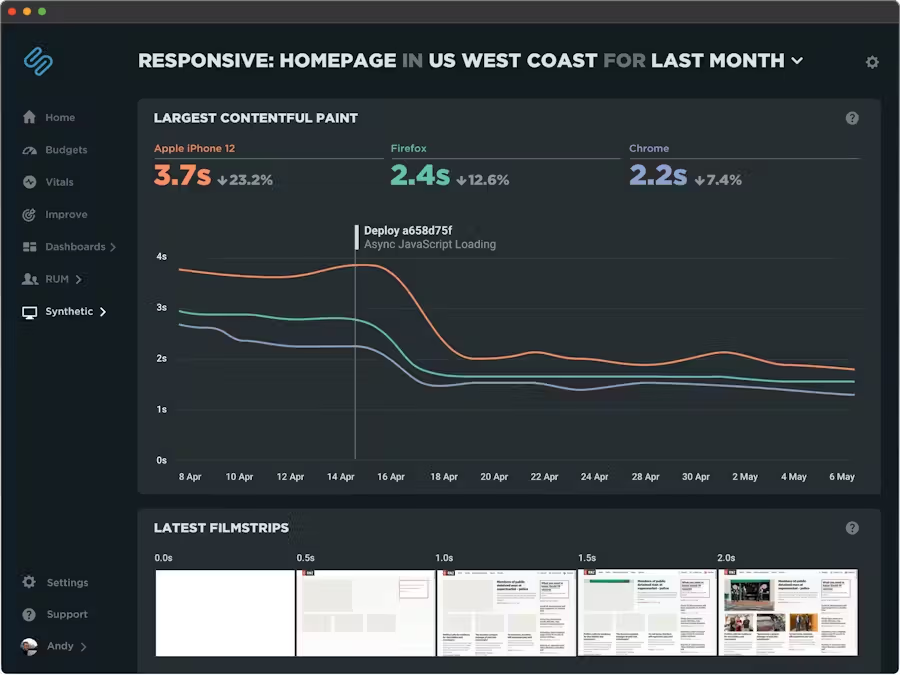
SpeedCurve, based in New Zealand, specializes in monitoring web application performance, providing key insights into user experiences across the globe. It helps teams understand and optimize site speed and user interaction, ensuring optimal performance and engagement. By focusing on the end-user experience, SpeedCurve allows developers to make data-driven decisions to enhance website efficiency and effectiveness.
Starter plan starting at $12 per monthGrowth plan starting at $576 per monthEnterprise plan starting at $1680 per month

Site24x7, established in 2006, offers a comprehensive suite of monitoring tools for websites, servers, applications, and networks. With robust uptime monitoring and automated performance analysis, it caters to technical and non-technical users alike.

Founded in 2006, Site24x7 offers a comprehensive suite of monitoring tools including website uptime, server, application, and network monitoring.
Has a 30-day free trial with no credit card. For all in one (Website Monitoring, Infrastructure, APM) there are 3 plans, Pro (₹2,800/month), Classic (₹7,120/month), Enterprise (₹18,000/month).

Checkly, founded in 2019 and headquartered in Berlin, specializes in active monitoring of web applications, focusing on API and end-to-end testing. It offers strong API monitoring, detailed performance insights, and comprehensive reporting tools.
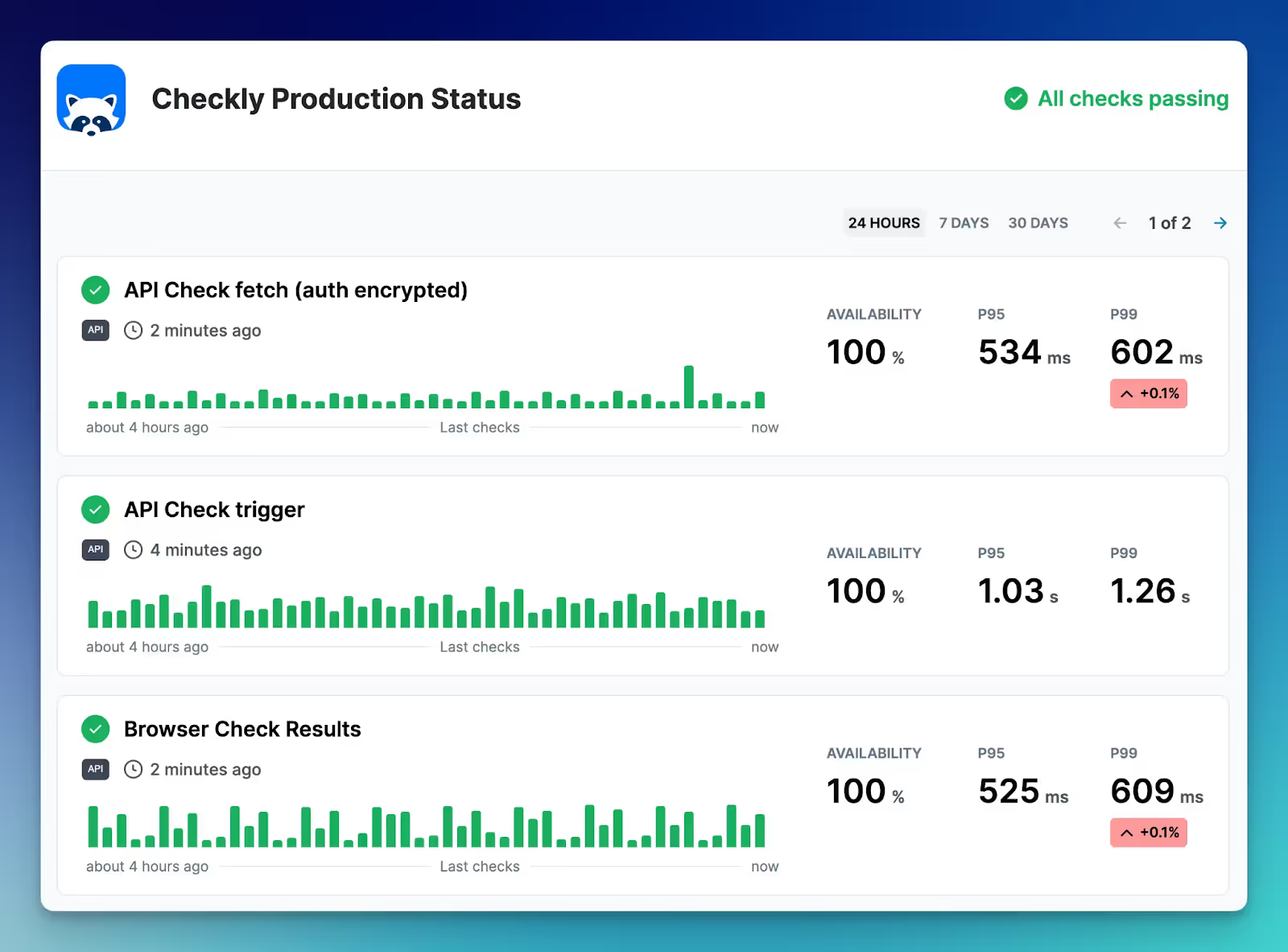
With headquarters in Berlin, Germany, Checkly was founded in 2019. It excels in active monitoring of web applications, focusing on API and E2E web app testing.
It has both monthly and yearly plans, with a free Starter plan for 14 days. Team plan starting at $80 per month Customized Enterprise plan, contact team for details.

Uptime.com, established in 2013, specializes in website monitoring and alerting for high availability. While excelling in uptime monitoring and reporting, its API testing and performance analytics are more limited.
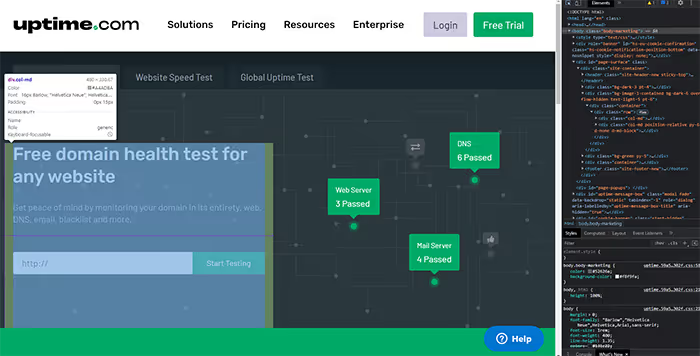
Uptime.com, founded in 2013, offers robust website monitoring and alerting services to ensure high availability and performance.
They have 2 sets of plans, for business and Edu & Non-profit. Starter plan starts at $20 and $18 per month respectively.

SmartBear, founded in 2009, offers a suite of software quality tools with a focus on synthetic monitoring for APIs and mobile apps. It provides robust API monitoring and detailed performance analysis features.
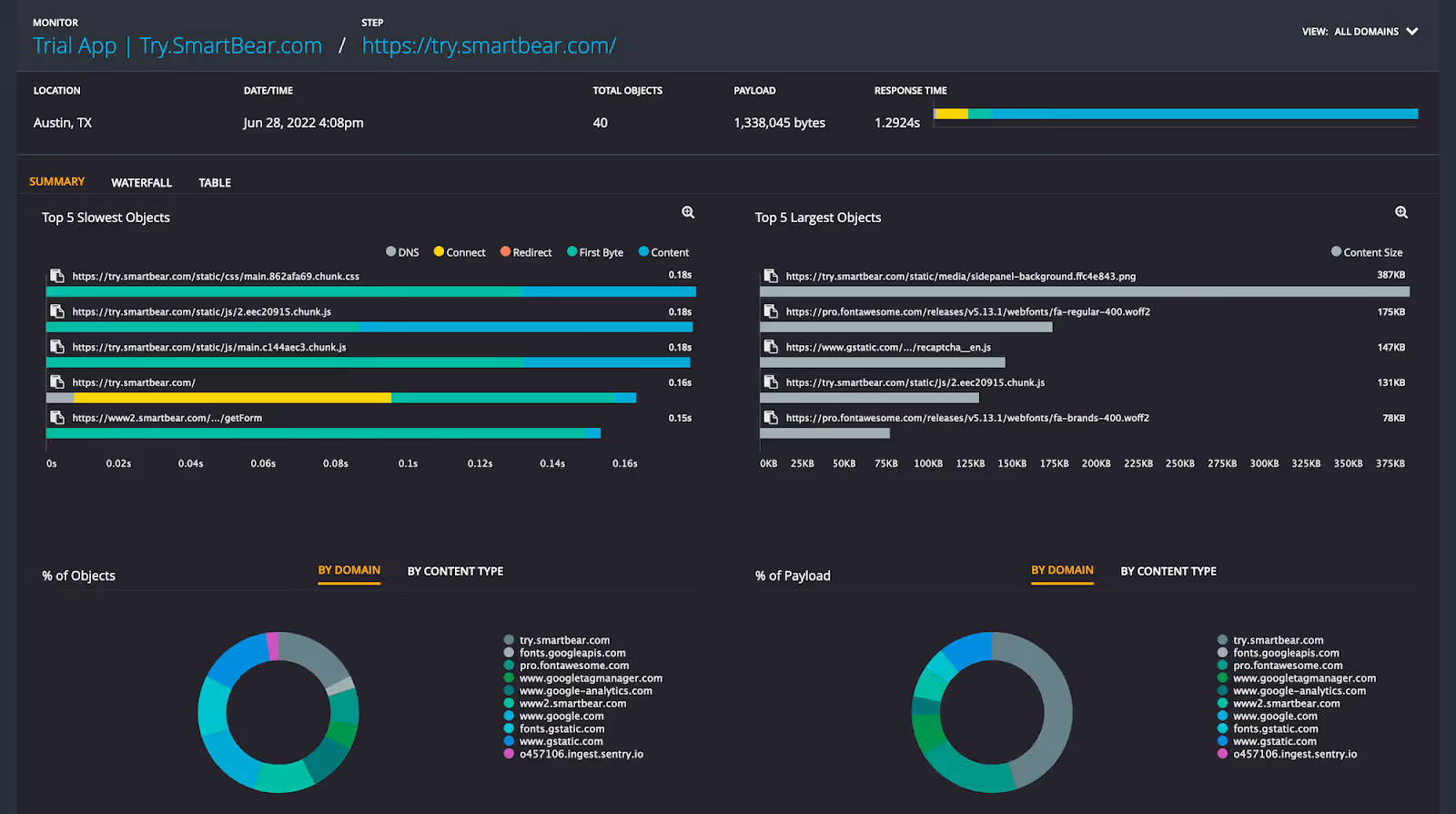
SmartBear has its headquarters in Somerville, Massachusetts, USA and founded in 2009. It provides a suite of software quality tools, including synthetic monitoring for APIs and mobile applications.
Varied depending on the toolset chosen; starts with a free 14 day day trial. TestComplete Base, pay for only what you need. Choose among mobile, desktop, or web options ($3,875) TestComplete Pro, entire base package at a bundled price point ($6,029) TestComplete Advanced, the most coverage for your app infused with AI. ($7,079).
As we wrap up our exploration of synthetic monitoring tools, remember that the right choice can profoundly impact the efficiency and success of your digital projects. By carefully considering the core functionality, usability, pricing, and proactive benefits of each tool, you're not just selecting software; you're setting the stage for future success.
Choose wisely, and let your synthetic monitoring tool be the silent guardian that ensures your applications perform flawlessly, day and night, for every user. Embrace the tool that best aligns with your goals and watch as it transforms challenges into opportunities for growth and innovation.
Try Doctor Droid — your AI SRE that auto-triages alerts, debugs issues, and finds the root cause for you.
(Perfect for DevOps & SREs)

Install our free slack app for AI investigation that reduce alert noise - ship with fewer 2 AM pings
Everything you need to know about Doctor Droid
Synthetic monitoring is a proactive approach that simulates user interactions with your applications to detect issues before real users experience them. Unlike real user monitoring (RUM) which tracks actual user experiences, synthetic monitoring runs scripted tests at regular intervals regardless of traffic, allowing you to identify problems even during low-traffic periods or before a feature goes live.
Synthetic monitoring tools benefit engineering teams by providing proactive issue detection, consistent performance benchmarking, 24/7 monitoring coverage, reduced MTTR (Mean Time To Resolution), and the ability to test critical user journeys without depending on real traffic. They also help teams validate SLAs and establish reliable performance baselines across different geographical locations.
Choose a synthetic monitoring tool by evaluating: your specific monitoring needs (uptime, API, full user journey testing), ease of integration with your existing tech stack, geographical coverage required, scripting capabilities, alert mechanisms, dashboard functionality, pricing model, and scalability. Consider starting with a free trial to ensure the tool meets your team's requirements before committing.
Yes, synthetic monitoring tools can help prevent revenue loss by identifying performance issues and outages before they impact real users. By detecting problems in critical user journeys (like checkout processes or login flows) proactively, these tools allow teams to fix issues before they affect customer experience and business transactions, directly protecting revenue streams.
Synthetic monitoring tools can perform various tests including simple uptime/ping tests, API endpoint monitoring, browser-based user journey simulations, transaction testing (like form submissions or checkout processes), content validation, load time analysis, and multi-step workflows. More advanced tools can also test from multiple geographic locations and device types to ensure consistent performance globally.
Test frequency depends on the criticality of the monitored system and your performance requirements. Critical user paths and revenue-generating functions might benefit from testing every 1-5 minutes, while less critical systems might be adequately monitored at 15-30 minute intervals. Balance comprehensive coverage with resource utilization and potential costs, as some tools price based on test frequency.
Implementation difficulty varies by tool. Modern synthetic monitoring tools typically offer user-friendly interfaces with low-code or no-code options for creating basic tests. More complex user journey simulations might require some scripting knowledge. Most leading tools provide templates, wizards, and documentation to simplify the process, allowing teams to start with simple tests and gradually build more sophisticated monitoring.
Synthetic monitoring tools typically offer multiple alerting channels including email, SMS, phone calls, webhook integrations with tools like Slack or Microsoft Teams, and integration with incident management platforms like PagerDuty or OpsGenie. Most tools allow you to configure alert thresholds, notification rules, and escalation paths to ensure the right team members are notified appropriately based on issue severity.
Dr. Droid can be self-hosted or run in our secure cloud setup. We are very conscious of the security aspects of the platform. Read more about security & privacy in our platform here.
Dr. Droid can be self-hosted or run in our secure cloud setup. We are very conscious of the security aspects of the platform. Read more about security & privacy in our platform here.


